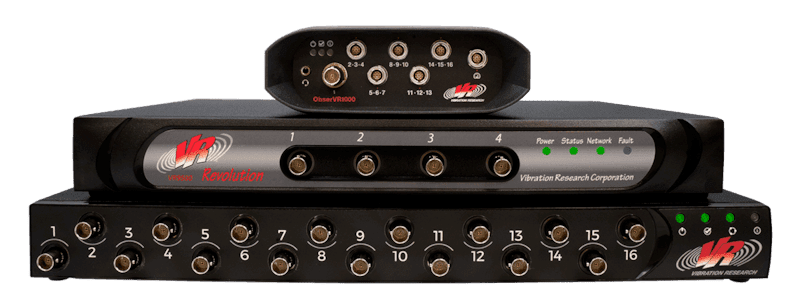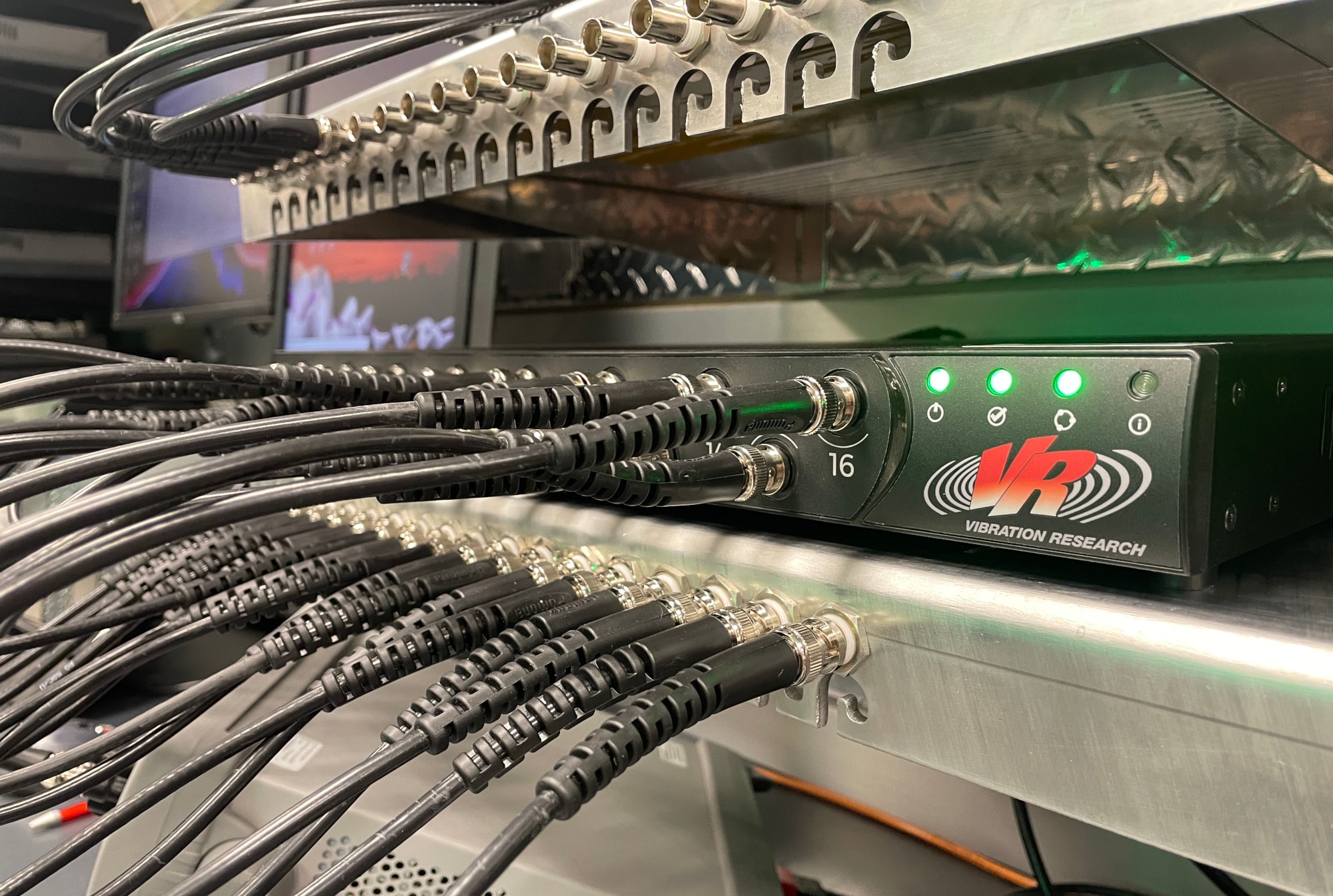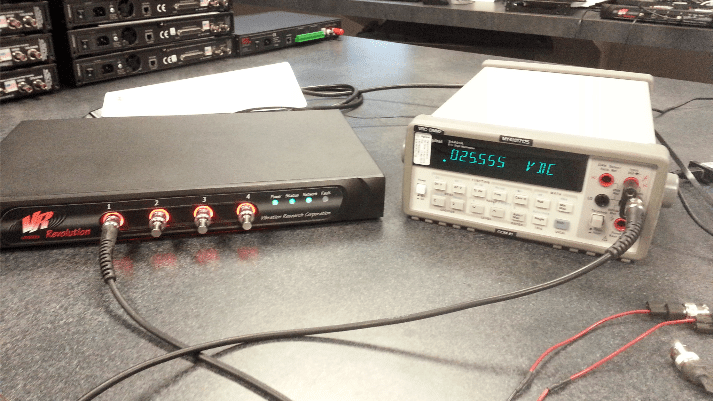Vibration Research (VR) offers many suggestions for running a successful vibration test, which means one that collects valid and pertinent data and runs without significant issues. However, all of these recommendations rely on accurate controller measurements.

Engineers can trust their controller’s measurements, particularly after years of use, if they follow routine calibration. Controller calibration establishes and maintains hardware measurement accuracy and should be a part of every vibration testing process.
What is Calibration?
Calibration performs a hardware check to confirm that the equipment’s readings are in-tolerance. The calibration adjusts the readings if the measurements do not pass the hardware check. For vibration controllers, the calibration process checks the equipment’s voltage and frequency readings and, if necessary, makes changes so the values are within small, established tolerances.

Calibration of a VR10500 vibration controller.
The goal of calibration is to ensure that a controller performs accurate tests and provides correct measurements throughout its lifetime.
Fatigue and Drift
The VR team calibrates every new controller before shipment, and the customer can expect an accurate controller when it arrives. However, all electronic systems are subject to fatigue and drift due to typical use, and VR systems are no exception. Therefore, engineers should implement a controller calibration schedule for their vibration controller(s). When it comes to vibration testing, engineers cannot assume their hardware is accurate year after year.
How Often Should I Calibrate?
VR recommends annual calibration of its vibration controllers. After a year, the risk of measurement drift or hardware fatigue increases, which can lead to more critical issues for the engineer down the line. Depending on the function of a product, an engineer may decide to shorten the time between calibrations.
Performing Calibration Verification
VR offers three calibration options to its customers. The team has a lab at its headquarters in Jenison, MI, USA, and can perform the calibrations for its customers. VR offers standard calibration or A2LA-accredited calibration to ISO 17025:2017. This option saves the customer time and ensures that the verification and any necessary adjustments are correct.

Connecting a VR9500 to a Digital Multimeter as part of calibration verification
The customer can also purchase the automated Calibration Verification software for VibrationVIEW and perform the controller calibration in their lab. The software requires a calibration verification license (included in a current Upgrades & Support Agreement). For an idea of how involved the process is, please review the instructions in the Preserving VR Hardware Accuracy VRU course.
Lastly, the customer can perform the calibration verification with an in-house, customized procedure. VR recommends modeling any custom procedure according to the manufacturer’s recommendations.
For the latter two options, the customer should return the hardware to VR for calibration adjustment and, perhaps, repair if the calibration verification shows that the hardware is no longer generating in-tolerance voltages.
Learn More
Comprehensive vibration tests and sophisticated field data analysis are essentially worthless without accuracy during test control and data acquisition. If an annual hardware calibration verification is not part of your normal operations, VR recommends considering your options. You can learn more details from the VRU course, Preserving VR Hardware Accuracy, including the step-by-step process for implementing calibration verification in your lab. Contact our sales team for more information on VR hardware and calibration.
